
by Eddie Powell | Jun 10, 2015
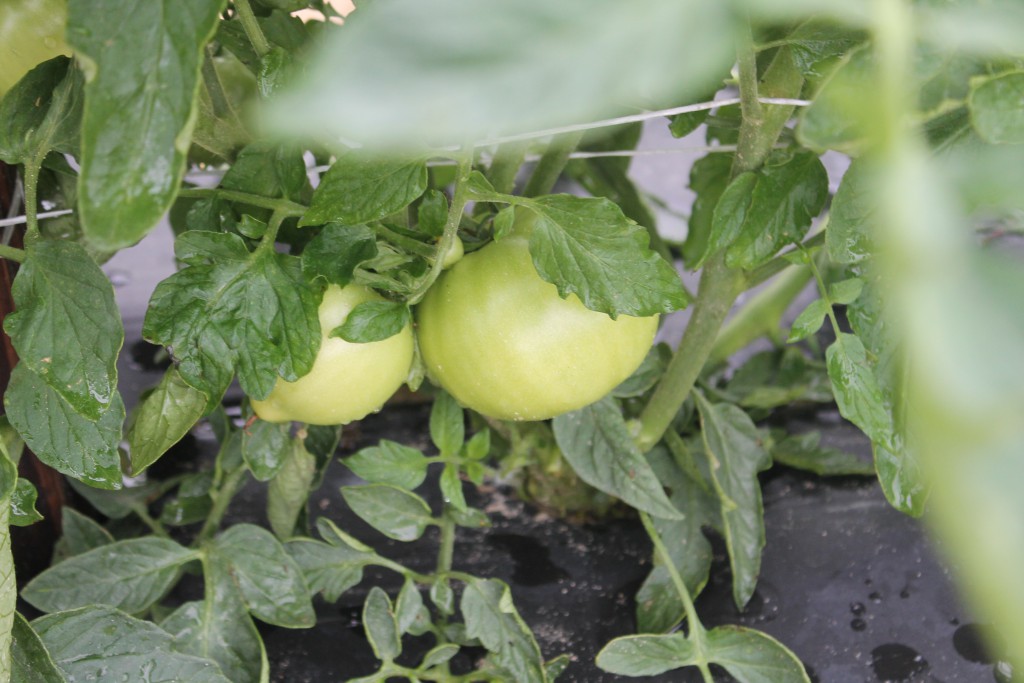 During this growing season, monitor your plants to keep them healthy. Healthy plants will be able to survive pest attacks better.
During this growing season, monitor your plants to keep them healthy. Healthy plants will be able to survive pest attacks better.
Nematodes are microscopic worms that attack vegetable roots and reduce growth and yield. Nematode populations can be reduced temporarily by soil solarization. It is a technique which uses the sun’s heat to kill the soil-borne pests. Also, adding organic matter to the soil will help reduce nematode populations. The organic matter will also improve water holding capacity and increase nutrient content.
If you choose to use pesticides, please follow pesticide label directions carefully. Learn to properly identify garden pests and use synthetic chemicals only when a serious pest problem exists, or a history of a particular problem exists at your site. Organic gardeners can use certain products like BT (Dipel) to control pest. Please remember not every product is for use on every crop, so be sure the target crop is listed on the label before purchasing the product. Follow label directions for measuring, mixing and pay attention to any pre-harvest interval warning. The pre-harvest interval is the time that must elapse between application of the pesticide and harvest. For example, broccoli sprayed with carbaryl (Sevin) should not be harvested for two weeks after application.
Pesticide application techniques:
- Spray the plant thoroughly, covering both the upper and lower leaf surfaces.
- Do not apply pesticides on windy days.
- Follow all safety precautions on the label, keep others and pets out of the area until sprays have dried.
- Apply insecticides late in the afternoon or in the early evening when bees and other pollinators are less active.
- To reduce spray burn, make sure the plants are not under moisture stress.
- Water if necessary and let leaves dry before spraying.
- Avoid using soaps and oils when the weather is very hot, because this can cause leaf burn.
- Control slugs with products containing iron phosphate.
Many common diseases can be controlled with sprays like chlorothalonil, maneb, or mancozeb fungicide. Powdery mildews can be controlled with triadimefon, myclobutanil, sulfur, or horticultural oils. Rust can be controlled with sulfur, propiconazole, ortebuconazole. Sprays are generally more effective than dusts.
If you have questions please call your UF/IFAS county extension office. We can provide helpful information about insect and disease identification.
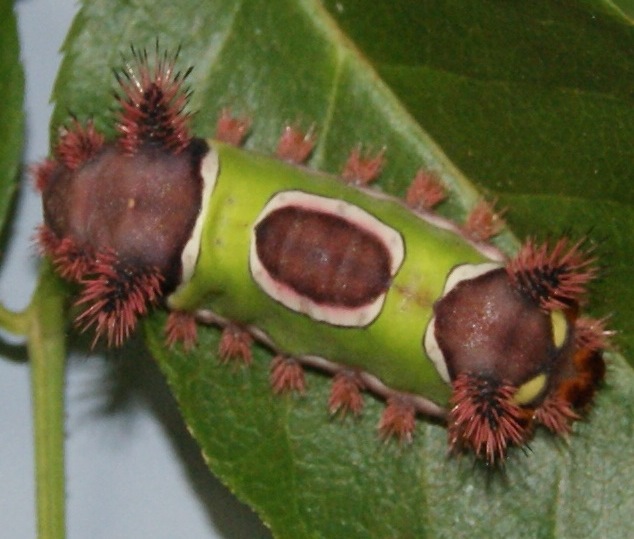
by Roy Carter | Jun 10, 2015
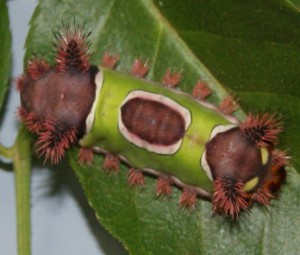
Saddleback Caterpiller, Image Credit Matthew Orwat UF/IFAS
The four major stinging caterpillars occurring in Florida are the Puss Caterpillar, Saddleback Caterpillar, IO Moth Caterpillar and Hag Caterpillar. Some less common ones also occur in the state. These caterpillars do not possess stingers, but have spines (nettling hairs) that are connected to poison glands. Some people experience severe reaction to the poison released by the spines and require medical attention. Others experience only an itching or burning sensation.
Stinging caterpillar’s feed on many pants, but they seldom are present in large enough numbers to cause serious damage. Their stings, rather than feeding, pose the primary threat. That’s why it’s important to learn to recognize and avoid these cantankerous crawlers. My information on stinging caterpillars was provided by Extension Entomologist Dr. Don Short and Dr. D. E. Short of the University of Florida’s Institute of Food and Agricultural Sciences
The puss caterpillar is stout bodied, almost an inch long, and completely covered with gray to brown hairs. Under the soft hairs are stiff, poisonous spines. When touched, the spines break off in the skin, causing serve pain. The saddleback caterpillar has a more striking appearance. It’s brown, with a wide green band around the middle of the body. There’s a large brown spot in the middle of the green band, giving the appearance of a brown saddle on a green blanket. The saddleback may exceed and inch in length, and is stout bodied. The main poison spines are born on pairs of projections near the front and rear of the body. There’s a row of smaller stinging organs along each side.
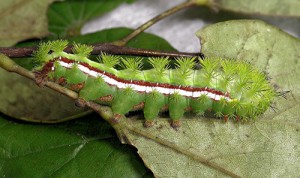
I O Moth Caterpillar, Image Credit UF Entomology
The IO moth caterpillar is pale green, with yellow and reddish to maroon stripes along the sides. It often exceeds two inches in length, and is fairly stout bodied. The poisonous spines, which form rows of bands across the body, are usually yellow with black tips.
The light brown hag moth caterpillar has nine pairs of variable length protrusions along its body, from which poisonous spines extend. The protrusions are curved and twisted, giving the appearance of disheveled hair of a hag.
Most contact with stinging caterpillars occurs in the spring and summer. As might be expected, children, campers, and gardeners are most frequent victims. When playing or working outdoors in infested areas, it pays to wear a long-sleeved shirt, long pants, and gloves.
Reactions to caterpillars poison vary with an individual’s sensitivity. Itching, burning, swelling, and nausea may be experienced. In severe cases, fever, shock, and convulsions may occur. If a person has a history of hay fever, asthma, or allergy or if allergic symptoms develop a physician should be contacted immediate. In cases of milder reactions, a strip of adhesive tape should be placed on and pulled off the affected area repeatedly to remove the spines. Then, apply ice packs, followed by a paste of baking soda and water.
Since so few stinging caterpillars are normally found on plants around the home mechanical methods usually offer the easiest means of control. Just carefully remove and crush the caterpillars, or knock them into a pan of kerosene. If a pesticide is needed, Bacillus thuringiensis (Bt), Seven or Malathion may be used in accordance with label directions for caterpillar control.
For more information on Caterpillars contact your UF/IFAS County Extension Service or visit www.http://edis.ifas.ufl.edu and see Publication 107 – Stinging and Venomous Caterpillars.
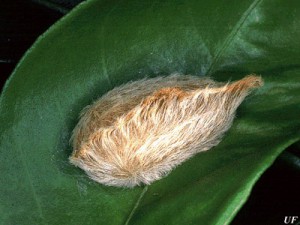
Puss Caterpillar, Image Credit University of Florida

by Larry Williams | Jun 9, 2015
There are areas in most landscapes where it just is not practical or possible to bring in the tiller and create a flowerbed. A little imagination, a decorative container and appropriate plants can turn a bare spot into a splash of color.
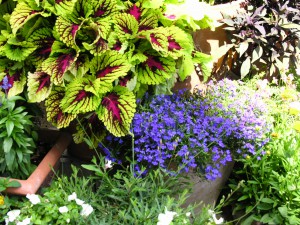
Colorful containers bring life to your small spaces.
Consider using a container of annuals to add color to a backyard deck or a paved entrance way. Or what about that area under the tree where grass doesn’t want to grow and where it would be difficult to till without damaging the tree’s roots and the tiller? How about the dry spot where there is no irrigation but where it would be more practical to occasionally hand water a well-placed container of colorful caladiums?
A wide variety of flowering annuals work well in containers. But be sure to select plants based on the exposure. Some annuals will quickly bake from full sun exposure and others will become leggy and bloom poorly in a shady location.
Impatiens and begonias do well in shaded places and remain in flower almost continuously. Caladiums with their colorful leaves also do well in containers in shady areas.
It’s more difficult to grow container plants in full sun but there are some annuals to consider for sunny spots. A few to consider include blanket flower (Gaillardia), portulaca and salvia.
There are many other annuals that can be successfully grown in containers. There are even sun-tolerant begonia and sun coleus varieties for full-sun places.
Don’t be afraid to try something different. To learn more about this topic, please see:
Container Gardens for Outdoor Spaces
Gardening Solutions
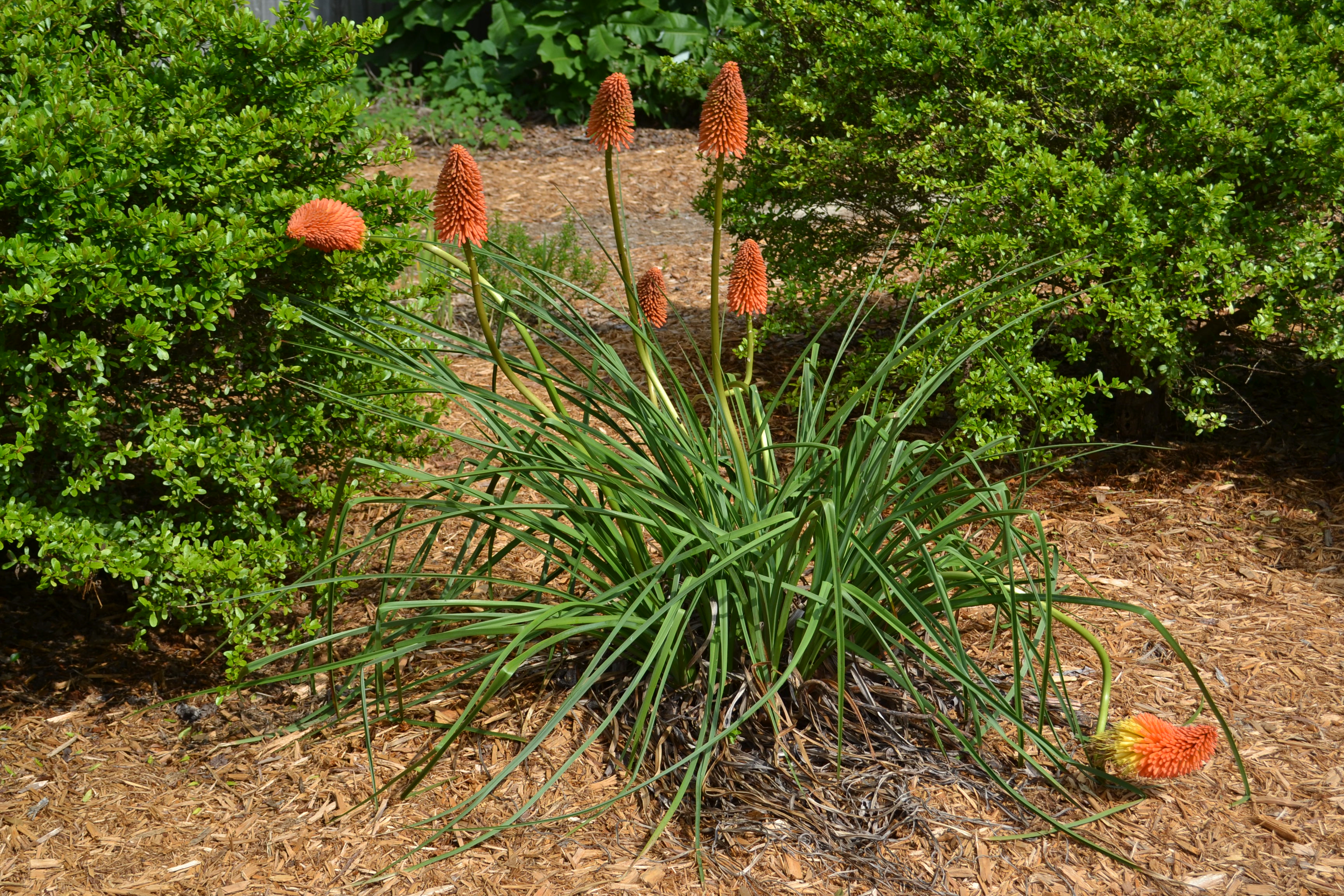
by Beth Bolles | Jun 3, 2015
If you are looking for flower colors to match the heat of June, Red hot poker, Kniphophia uvaria has the blooms that match the season. Also known as the torch lily, this perennial performs well in full sun areas with well-drained soil. Leaves about 3 feet long and 1 inch wide form a clumping plant over the years to about 3 feet in height and 2 feet in spread.
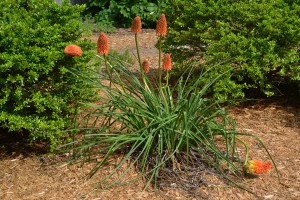
The highlight of the plant are the flowers that form in May and June. Stalks grow above the foliage holding clusters of tubular flowers that emerge red/orange and mature to yellow. Flowers are often in transition between the two colors. Remove flowers after they fade.
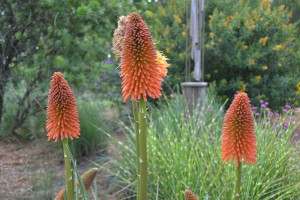
Red hot poker is a low maintenance plant along the Gulf Coast. Extreme cold may set plants back a little but clumps grow well during winters with average cold temperatures. Plants can be divided after several years but the bloom cycle may be delayed following this practice.
by Carrie Stevenson | Jun 2, 2015
Hurricane Season began June 1. While storm experts are predicting a slower year due to El Nino conditions, it only takes a single storm landing nearby to cause millions in damage, uprooting trees and lives.
Tree damage to homes and property can be devastating, and one of the first instincts of many homeowners when they see a big storm in the Gulf is to start trimming limbs and removing trees. However, it is wise to fully evaluate one’s landscape before making an irreversible decision. Trees are crucial for providing shade (i.e. energy savings), wildlife habitat, stormwater management, and maintaining property values.
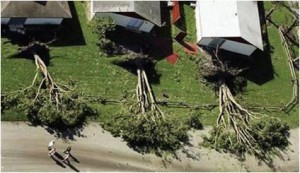
Downed trees in a row along a hurricane-devastated street. Photo Credit: Mary Duryea, University of Florida
University of Florida researchers Mary Duryea and Eliana Kampf have done extensive studies on the effects of wind on trees and landscapes, and several important lessons stand out. Keep in mind that reducing storm damage often starts at the landscape design/planning stage!
- Select the right plant for the right place.
- Post-hurricane studies in north Florida show that live oak, southern magnolia, sabal palms, and bald cypress stand up well compared to other trees during hurricanes. Pecan, water and laurel oaks, Carolina cherry laurel and sand pine were among the least wind resistant.
- Plant high-quality trees with strong central trunks and balanced branch structure.
- Longleaf pine often survived storms in our area better than other pine species, but monitor pines carefully. Sometimes there is hidden damage and the tree declines over time. Look for signs of stress or poor health, and check closely for insects. Weakened pines may be more susceptible to beetles and diseases.
- Remove hazard trees before the wind does. Have a certified arborist inspect your trees for signs of disease and decay. They are trained to advise you on tree health.
- Trees in a group (at least five) blow down less frequently than single trees.
- Trees should always be given ample room for roots to grow. Roots absorb nutrients, but they are also the anchors for the tree. If large trees are planted where there is limited or restricted area for roots to grow out in all directions, there is a likelihood that the tree may fall during high winds.
- Construction activities within about 20 feet from the trunk of existing trees can cause the tree to blow over more than a decade later.
- Plant a variety of species, ages and layers of trees and shrubs to maintain diversity in your community
- When a tree fails, plant a new one in its place.

 During this growing season, monitor your plants to keep them healthy. Healthy plants will be able to survive pest attacks better.
During this growing season, monitor your plants to keep them healthy. Healthy plants will be able to survive pest attacks better.









